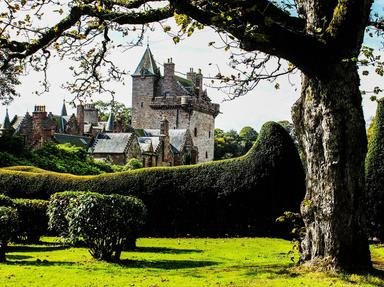Quiz Answer Key and Fun Facts
1. The city of Edinburgh grew around what was once an ancient Roman fort in what neighborhood, which was also home to the earliest known people in Edinburgh in 8500 BC?
2. Which of the following Scottish kings made Edinburgh a royal burgh in the 12th century, which allowed Edinburgh to establish its own charter and laws?
3. Signed in 1328, the Treaty of Edinburgh-Northampton ended which war?
4. Edinburgh Castle survived the 1544 burning of Edinburgh during the Rough Wooing.
5. Who murdered Mary, Queen of Scots' secretary David Rizzio at Holyroodhouse Palace on 9th March 1566?
6. Which person occupied Edinburgh toward the end of the Wars of the Three Kingdoms, when he easily won the Battle of Dunbar?
7. Which of the following best describes Edinburgh during the early years of the 18th century?
8. Which duo of serial killers struck Edinburgh in 1828 and sold their victims' bodies to medical schools and doctors?
9. Edinburgh was not bombed during World War II.
10. What object was returned to Edinburgh in 1996 as a symbolic gesture of goodwill between the English and Scots?
Source: Author
Joepetz
This quiz was reviewed by FunTrivia editor
gtho4 before going online.
Any errors found in FunTrivia content are routinely corrected through our feedback system.

